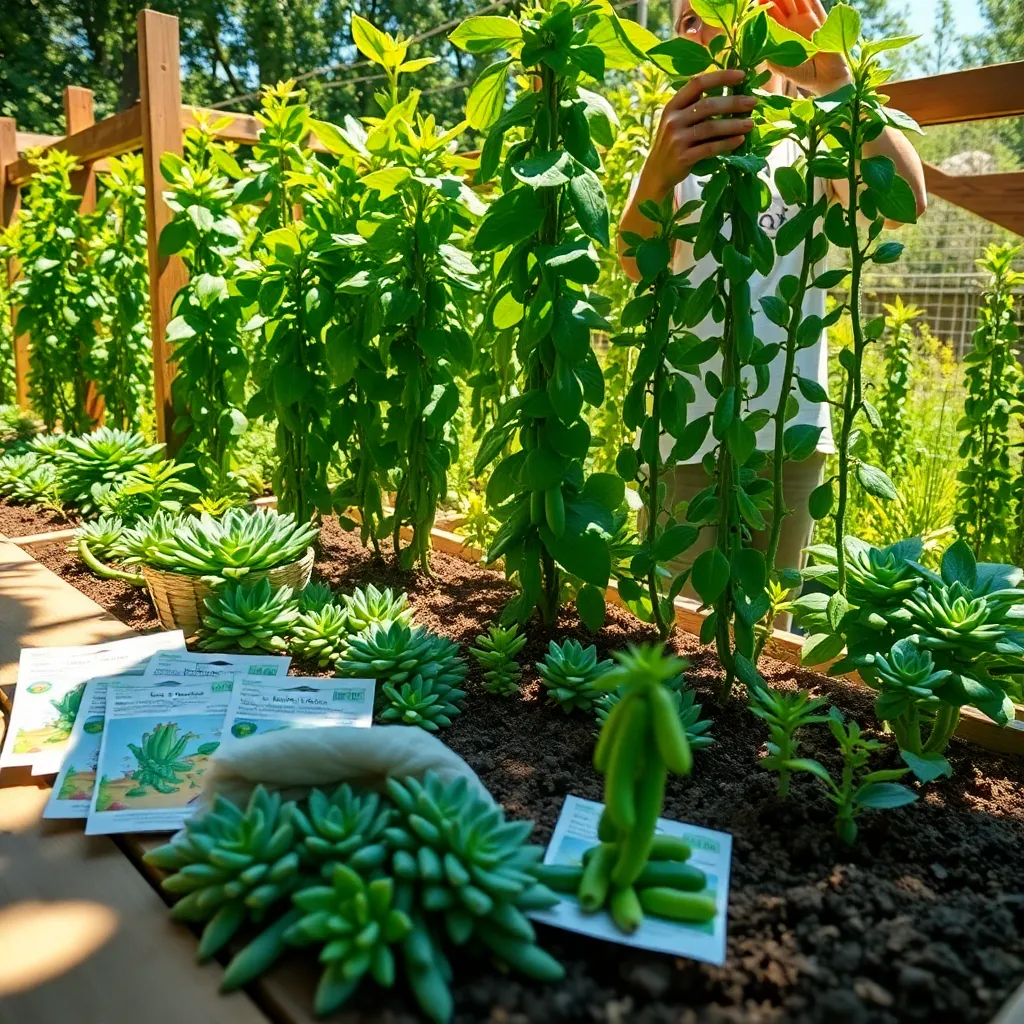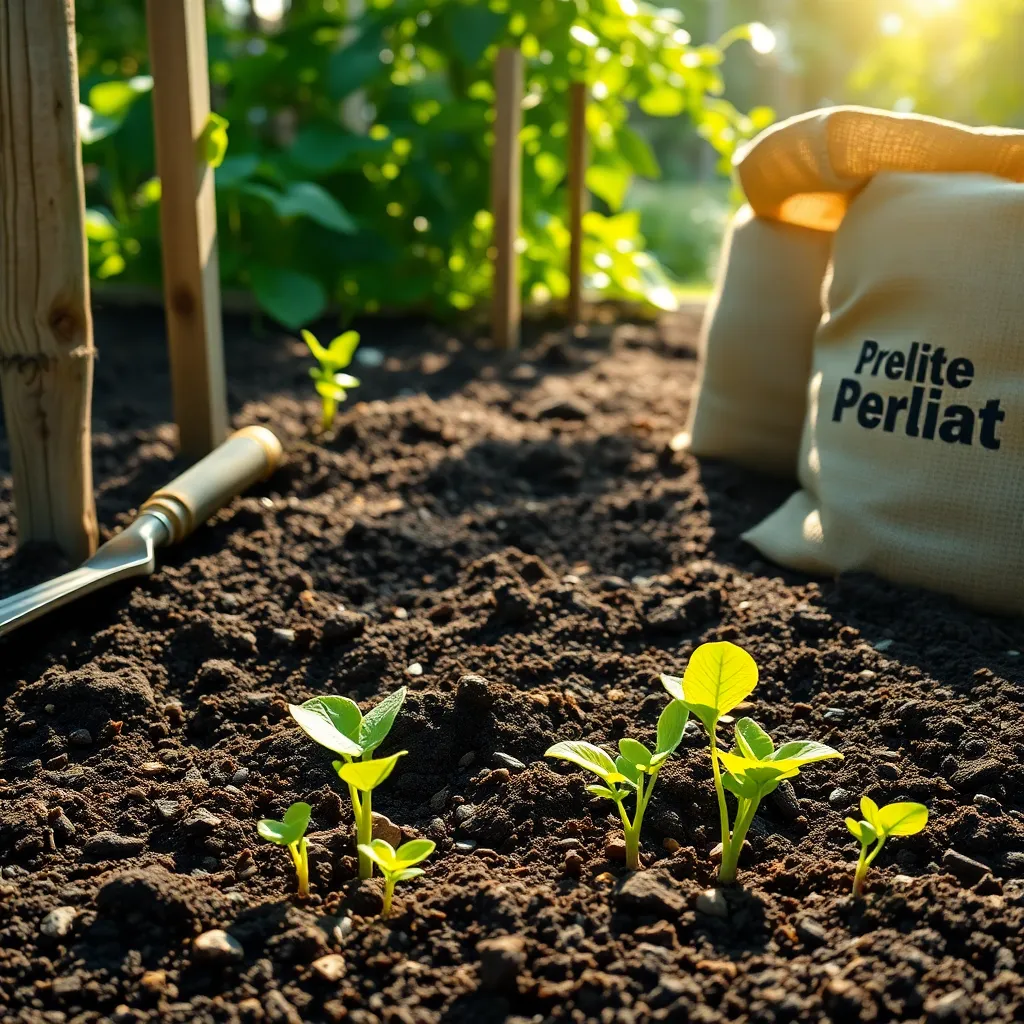Imagine stepping into your garden and being greeted by the vibrant green vines of freshly grown beans, their pods ready to burst with life and flavor. Green beans are not only a delightful addition to any garden but also a rewarding crop that offers bountiful harvests with a touch of care and attention.
Whether you’re a novice gardener embarking on your first planting adventure or a seasoned green thumb looking to refine your techniques, growing green beans can be a fulfilling endeavor for all. This article will guide you through the essentials of planting, nurturing, and harvesting these versatile veggies, ensuring you enjoy a plentiful and delicious yield.
As we delve into the world of green beans, you’ll learn about the different varieties available, optimal planting conditions, and effective care strategies that promote healthy growth. By the end, you’ll be equipped with the knowledge and confidence to cultivate green beans that not only thrive but also add a nutritious punch to your meals.
Select Ideal Green Bean Variety

When selecting a green bean variety, consider whether you prefer bush beans or pole beans. Bush beans are compact and grow well in small spaces, while pole beans require support but offer a longer harvest period.
For beginners, bush beans like ‘Provider’ or ‘Contender’ are excellent choices due to their ease of growth and high yields. Experienced gardeners might enjoy pole varieties like ‘Kentucky Blue’ or ‘Blue Lake’, which produce beans over several months with proper care.
Choose a variety suited to your climate by checking the days to maturity on the seed packet, which can range from 50 to 70 days. Green beans thrive in temperatures between 65-85°F (18-29°C), so select a planting time that aligns with these conditions in your region.
Ensure your soil is well-drained and rich in organic matter, as green beans prefer loamy, fertile soil. Amend your soil with compost before planting, and maintain a consistent watering schedule, especially during flowering and pod formation, to enhance growth.
Prepare Well-Draining Soil

To ensure your green beans thrive, start by creating well-draining soil. Green beans prefer loose, sandy soil that prevents water from pooling around their roots.
Begin by removing any debris, rocks, or old roots from your planting area. This preparation step will encourage root penetration and allow your beans to grow vigorously.
Next, amend your soil with organic matter, such as compost or well-rotted manure. These materials improve soil structure and enhance drainage while also adding essential nutrients.
For gardeners dealing with heavy clay soil, consider incorporating coarse sand or perlite to improve drainage. This is especially important if you experience heavy rainfall, as excess water can lead to root rot in green beans.
Regularly test your soil’s drainage by digging a small hole and filling it with water. If the water drains within a few hours, your soil is ready for planting; otherwise, further amendments may be needed.
Plant Seeds at Correct Depth

Planting green bean seeds at the correct depth is crucial for successful germination. When seeds are planted too deep, they may struggle to emerge, while shallow planting could expose them to pests and drying out.
To ensure optimal growth, plant green bean seeds about 1 inch deep in the soil. This depth provides the right balance of moisture and warmth required for germination.
Cover the seeds lightly with soil, gently pressing down to ensure good soil-to-seed contact. This step helps to keep the seeds moist and protected, which is especially important in windy or dry conditions.
For best results, space seeds about 2 to 4 inches apart in rows that are 18 to 24 inches apart. This spacing allows for adequate air circulation and reduces the risk of disease as the plants mature.
Consider marking the rows with a string or garden marker to maintain a neat layout as the plants grow. This practice not only helps with organization but also assists in monitoring plant health and development.
Water Consistently and Moderately

Watering green beans consistently and moderately is essential for healthy growth and pod production. Begin by ensuring the soil remains moist but not waterlogged, which can lead to root rot and other issues.
Aim to water deeply once or twice a week, depending on your climate and soil type. In sandy soils, which drain quickly, you may need to water more frequently, whereas clay soils retain moisture longer.
Consistent watering helps maintain soil moisture levels, promoting steady plant growth. Use a soaker hose or drip irrigation for the best results, as this directs water right to the roots where it’s needed most.
For advanced gardeners, consider monitoring soil moisture levels with a moisture meter. This tool can help you determine when to water, reducing the risk of over- or under-watering your plants.
Support Vines with Trellises

Green beans are vigorous climbers, and providing support with trellises can significantly enhance their growth. A sturdy trellis allows the vines to grow vertically, improving air circulation and sunlight exposure, which reduces the risk of disease.
When setting up a trellis, choose a location with well-drained soil and full sun exposure. Ensure the trellis is securely anchored to withstand wind and the weight of mature bean vines.
For beginners, a simple A-frame or teepee trellis made from bamboo stakes or wooden poles works well. More experienced gardeners might explore using wire mesh or lattice for added support and aesthetic appeal.
Be sure to plant green bean seeds about 3 inches apart at the base of the trellis. As the beans begin to sprout, gently guide the young vines to start climbing the support structure, which encourages upward growth.
Regularly check the vines and tie them loosely to the trellis with garden twine if needed. This practice keeps the plants tidy and prevents them from becoming tangled or sprawling on the ground.
Conclusion: Growing Success with These Plants
In “How to Grow Green Beans,” we explored five core concepts for nurturing vibrant relationships: effective communication, mutual respect, shared goals, adaptability, and appreciation. By embracing open dialogue, you can build a foundation of trust and understanding. Mutual respect encourages healthy boundaries and values each partner’s individuality. Shared goals foster a sense of partnership and future planning, while adaptability allows you to navigate life’s unpredictable changes together. Finally, expressing appreciation strengthens your bond and nurtures emotional intimacy.
As an actionable step, schedule a dedicated time this week to discuss shared goals with your partner, allowing your relationship to blossom with purpose. This small yet significant action can enhance your connection and set the stage for long-term success.
Don’t let this valuable information slip away—bookmark this article for quick reference whenever you need guidance. By incorporating these principles, you’re investing in a future filled with mutual growth and happiness. Remember, every relationship is a living entity that thrives on attention and care. With these tools in your arsenal, you’re well on your way to cultivating a love that grows stronger with each passing day.
